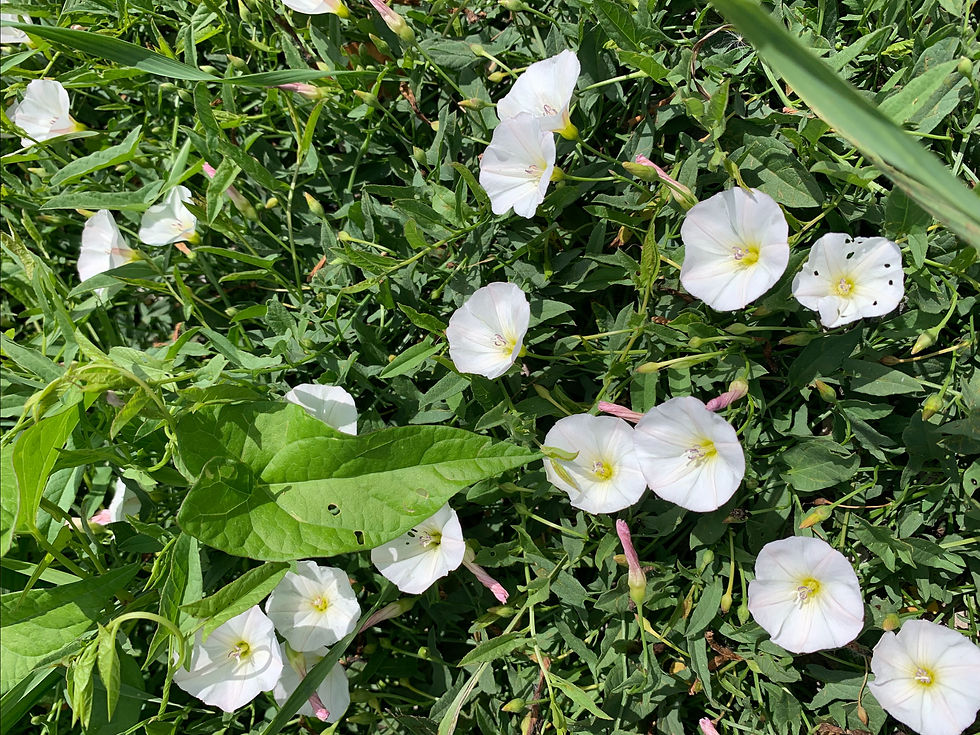Bindweed
- secretary9526
- Sep 15
- 2 min read
Garden Clippings for August 23
As weeds go, Bindweed has got to be the worst. Bindweed’s quick growing stems will twist and twine through ornamental plants a mile-a-minute, smothering a garden in mere weeks.
Bindweed, related to Morning Glory, is native to Europe and Asia, and arrived in North America about 300 years ago. A native version, Hedge Bindweed is similar, with larger leaves and flowers.
Bindweed is easy to identify. Green leaves are about an inch long, and arrow shaped. Butttercup type flowers mostly in white, are about the size of a toonie. Its invasive wiry stems twine tightly around other plants, choking the host plant’s ability to thrive.
Farmers are not fond of Bindweed because it is highly adaptable and loves to grow in fertile, cultivated soil. The perennial weed dies off in late fall, only to pop up again in summer when soil is warm.
Getting rid of Bindweed is not a cake walk and will require persistence and diligence. Pulling them out is futile, because the roots will not come with it. Attempting to dig deep to capture all the roots will do more harm than good because cultivation will only spread roots from place to place.
Your best bet is to cut roots off at ground level. Cut them again as soon as they resprout. Eventually the Bindweed will die because it is unable to photosynthesize. You may need to chop the plant many times, but eventually the Bindweed will give up.
When breaking the Bindweed off at the soil level, discard the stems in the trash can for off-site disposal. Adding Bindweed to the compost heap will likely come back to bite you when you mix the compost into the garden.
Alternatively, once you have cleaned out the garden of all the visible Bindweed, cover the soil with several layers of newspaper or cardboard. Overlap the layers to prevent light from reaching the soil. Be sure to check the outside edges of the covering material to ensure the Bindweed doesn’t wander.
Glyphosate is an herbicide effective to eradicate Bindweed and many other weeds, but its use is restricted to those in the agriculture business. In Ontario, homeowners may use glyphosate if used to protect your health and safety, such as the control of Poison Ivy.
In next week’s Garden Clippings we will discuss ways to encourage pollinators to visit your backyard.

.png)
_edited.png)



Comments